
Roots
For those of us whose hair defies a single, smooth cascade, whose coils and curls dance with a will of their own, the question of care transcends mere aesthetics. Our hair, textured and vibrant, carries more than protein and pigment; it holds memory. Each strand can be a living archive, echoing the wisdom of generations who understood its unique cadence and spoke its silent language.
To look at textured hair is to look upon a lineage, a living chronicle of resilience and ingenious adaptation. What we practice with our hair today, from the simplest touch to the most intricate style, often stands as a continuation of these profound dialogues with the past, dialogues rooted deeply in heritage .

Hair Anatomy Acknowledging Ancestry
The very architecture of textured hair distinguishes itself. Unlike straighter hair types, which often grow in a more circular or oval cross-section, coily and curly strands emerge from elliptical follicles. This elliptical shape, coupled with the unique way keratin proteins bond, causes the hair shaft to twist and turn as it grows. These twists, or helixes, are points of natural variation in strength along the strand, influencing how light reflects and how moisture travels.
Ancestral peoples, through generations of keen observation, understood this innate structure. They recognized the hair’s tendency towards dryness due to the open cuticle at each bend and the challenges of detangling without damage. Their solutions, passed down through oral tradition and communal practice, implicitly addressed these biological realities, long before modern science articulated the precise molecular explanations.
Our hair’s physical make-up, its distinct twists and turns, is a testament to the diverse environments from which our ancestors hailed. It is a biological signature, reflecting adaptation to sun and climate, designed to protect and regulate. This inherent structure, a heritage inscribed upon each fiber, calls for a specific approach to care.

Understanding Hair’s Ancient Groupings
Modern textured hair classification systems, like those using numbers and letters (e.g. 4C, 3A), provide a useful shorthand for describing curl patterns. Yet, these systems, while descriptive, typically lack the rich cultural context that historically defined hair within Black and mixed-race communities. For centuries, hair was not categorized by a numerical sequence but by its appearance, texture, and its place in social order.
Hair types might be spoken of in terms of their resemblance to specific plants, their response to moisture, or their spiritual significance within a community. The language used was often observational, practical, and deeply personal, reflecting the intimate relationship between individuals and their hair.
Ancestral understanding of textured hair acknowledged its unique structure, guiding care practices long before scientific classification systems existed.
Consider the myriad ways hair was discussed in ancient African societies. Its characteristics were understood not through an abstract chart but through lived experience and shared wisdom. A particular coil might be known for its ability to hold an adornment, another for its resilience against the elements. This was a classification born of practicality and shared heritage .
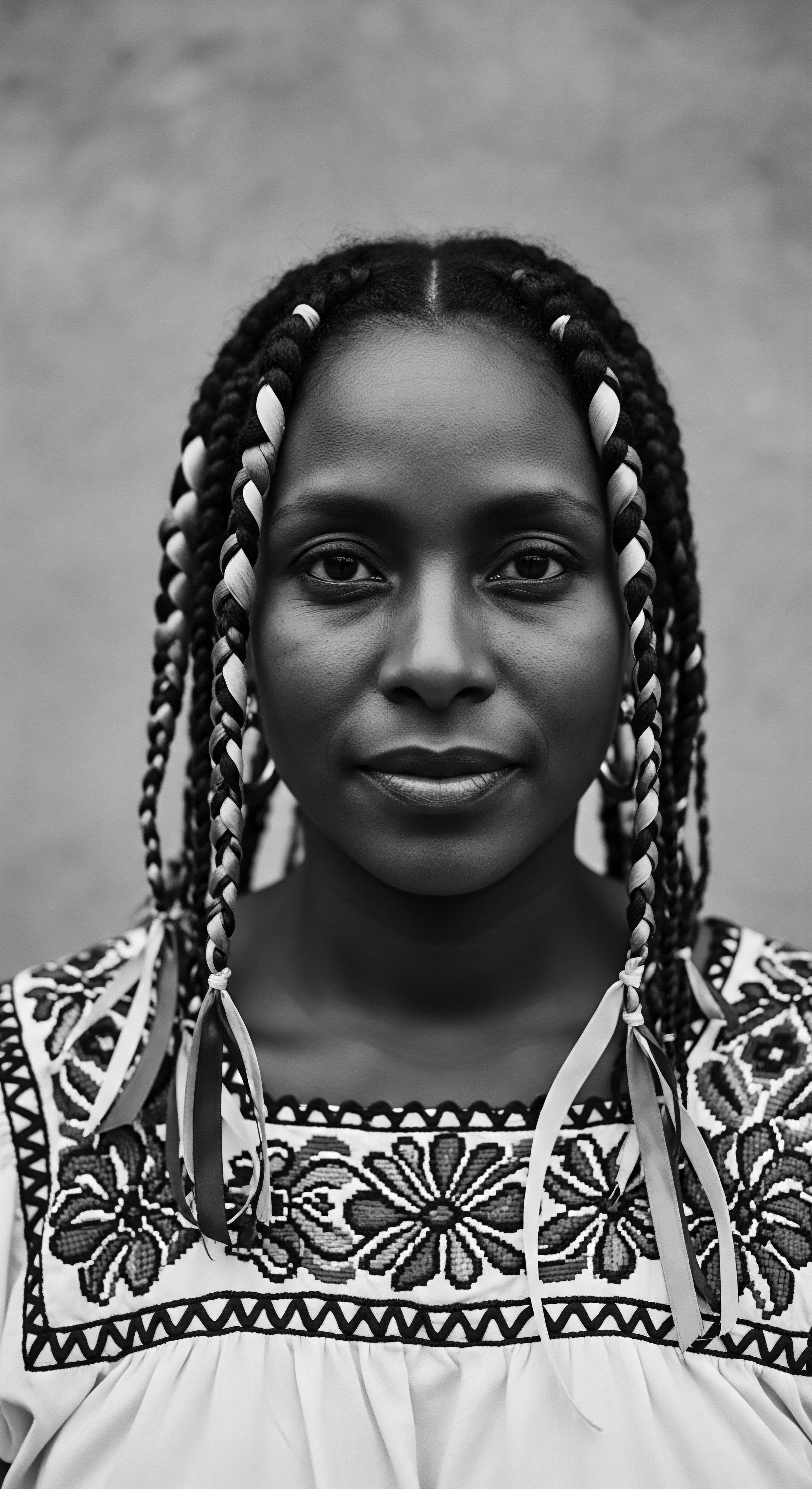
The Language of Textured Hair from Yesteryear
The lexicon surrounding textured hair today carries echoes of historical journeys. Terms that once held derogatory connotations, forced upon communities during eras of oppression, are being reclaimed or shed. Simultaneously, a movement arises to restore traditional words or coin new ones that celebrate the hair’s natural form.
In many African languages, specific words denote not simply “hair” but “good hair” or “strong hair,” often referencing its health, its ability to grow, and its visual appearance when well cared for. These terms represent a linguistic heritage that valued hair for its intrinsic qualities, not against an external, often Eurocentric, standard.
For instance, the Yoruba people of Nigeria used the term “Irun Kiko” to refer to hair threading, a practice dating back to the 15th century. This specific term grounds the practice in a particular cultural history and understanding, demonstrating a specialized vocabulary for hair care.
- Didi ❉ A Yoruba term, meaning “braiding,” often used in conjunction with “Irun” (hair) to describe various braided styles, demonstrating a focus on the creation of patterns.
- Kolese ❉ A Yoruba word, meaning “a creature without legs,” sometimes used for cornrows, hinting at their appearance lying close to the scalp.
- Chébé ❉ From Chad, referring to the seeds of a plant used for hair strength and length, highlighting a traditional ingredient and its specific purpose.
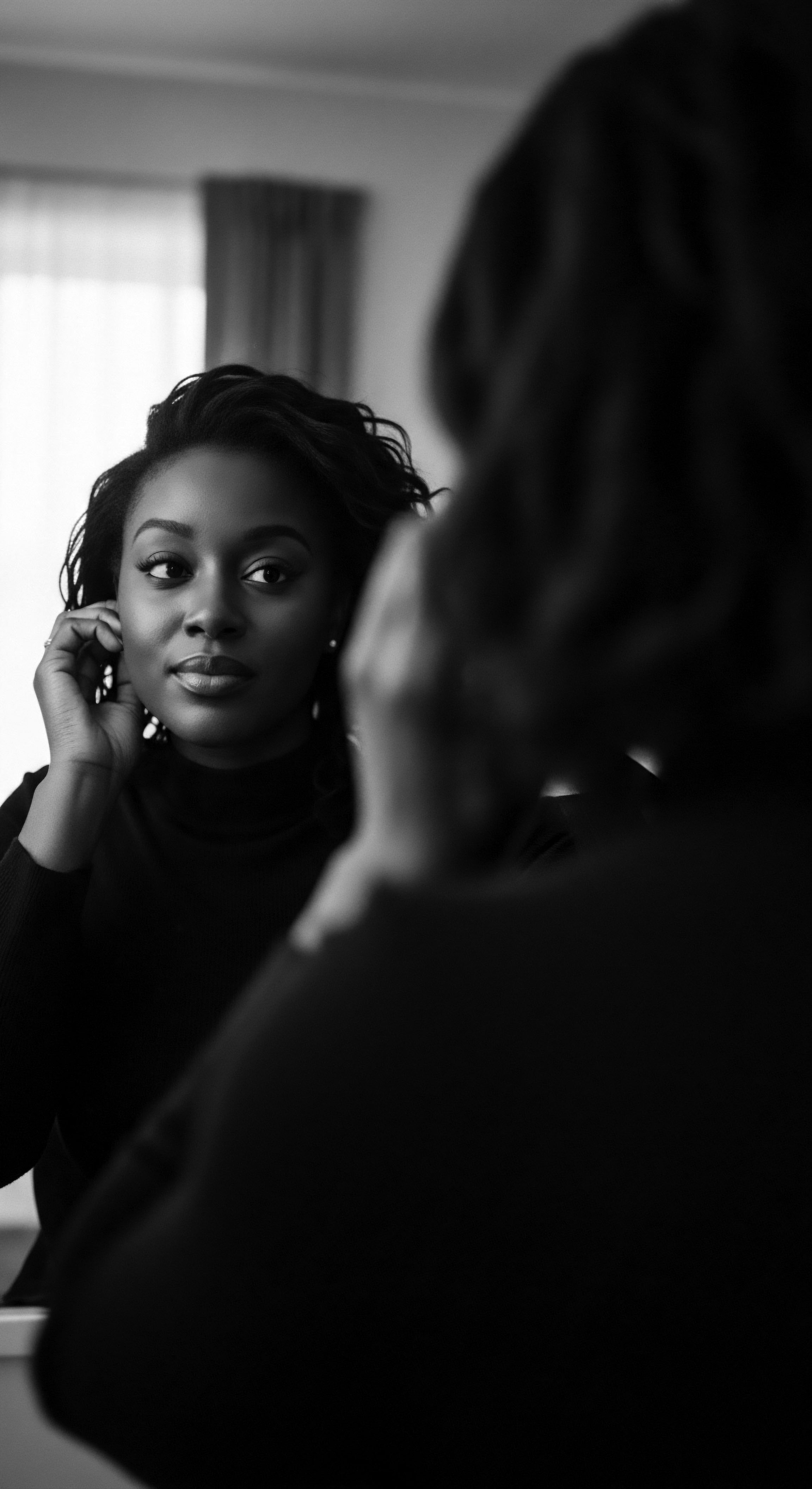
Hair’s Cycles and Environmental Ties
The cycle of hair growth—anagen, catagen, telogen—is a biological constant. Yet, the factors influencing these cycles, such as nutrition, climate, and stress, were understood differently by ancestral communities. Their hair care practices often reflected a deep connection to the rhythms of nature and the availability of local resources. Seasonal changes might dictate shifts in styling or care.
Dietary practices, rich in traditional foods, naturally provided the nutrients essential for hair vitality. The understanding was holistic ❉ a healthy body supported healthy hair. This ancient knowledge forms a foundational aspect of our collective heritage , reminding us that hair health is a reflection of overall wellbeing and environment.
Communal living and close-knit family structures meant that hair care was often a shared activity, a ritual passed from elder to child. This direct transmission of knowledge, interwoven with daily life and natural cycles, ensured the continuity of healthy practices, establishing a living heritage of care.

Ritual
The styling of textured hair extends far beyond simple aesthetics. It serves as a profound act of identity, communication, and preservation. From the intricate cornrows of ancient African societies to the symbolic headwraps worn across the diaspora, each style often tells a story, marks a status, or protects the precious strands within. These are not merely fashion choices; they are living testaments to an enduring heritage , echoing the hands and wisdom of those who came before.
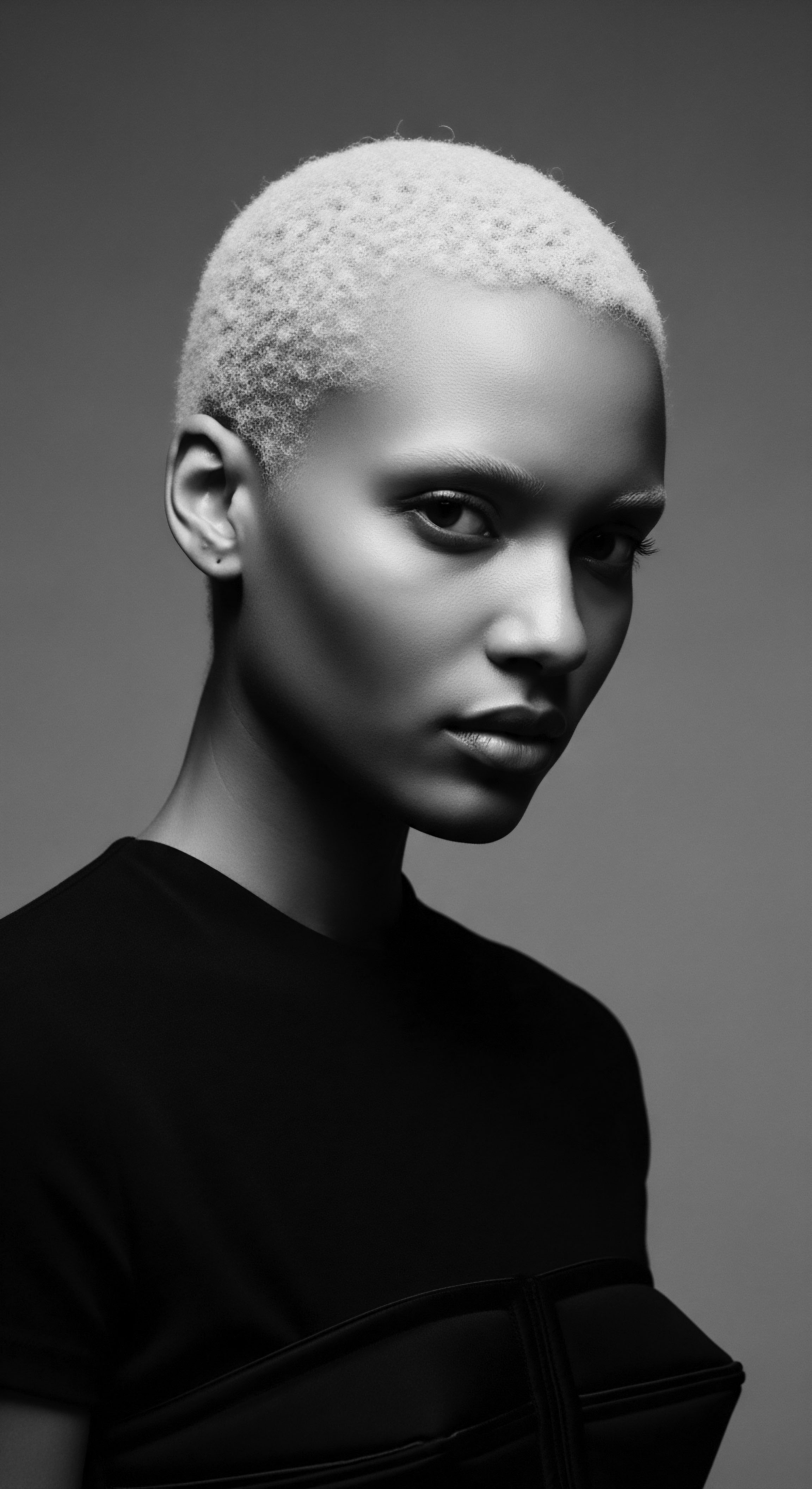
Protective Styling’s Ancestral Roots
Protective styles, a cornerstone of textured hair care today, possess roots that stretch back thousands of years. Cornrows, braids, and twists were not only visually striking but also served vital practical purposes in ancient African civilizations. They shielded hair from harsh climates, minimized breakage, and prolonged cleanliness, especially in societies where water might be scarce or washing elaborate.
Beyond practicality, these styles served as identifiers of age, marital status, tribal affiliation, wealth, and even spiritual beliefs. A hairstyle could, at a glance, convey an entire personal history and community standing, making it a visible marker of heritage .
The act of braiding itself was often a communal ritual, a time for bonding, storytelling, and the transmission of knowledge. Grandmothers, mothers, and aunties would spend hours with younger generations, their fingers deftly working through coils, simultaneously imparting wisdom and securing the continuity of cultural practices. This communal aspect, the shared time and touch, is as much a part of the protective styling heritage as the resulting coiffure.
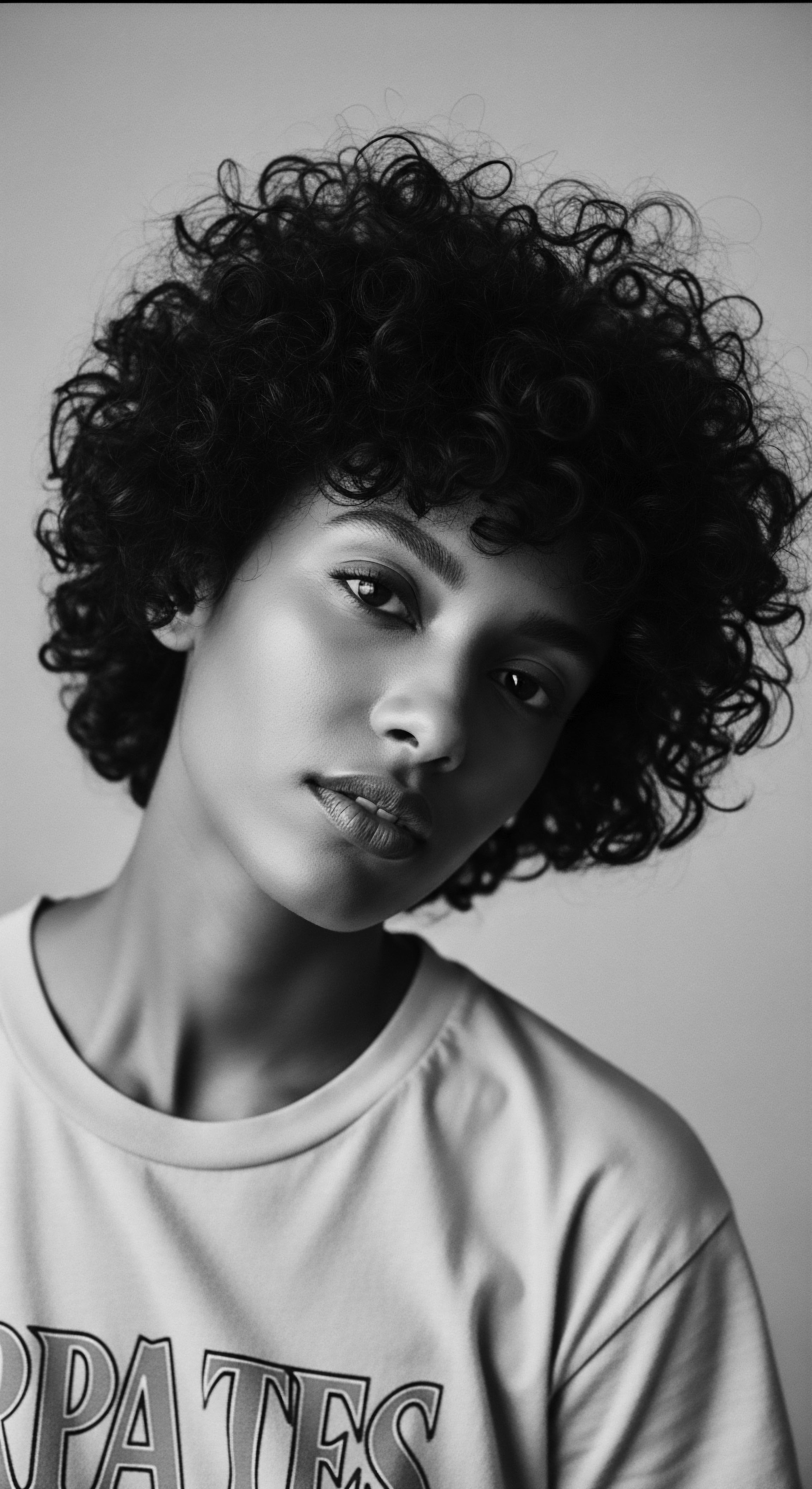
Natural Styles and Traditional Definition
Defining and accentuating textured hair’s natural patterns, a goal for many today, parallels ancient methods focused on working with the hair’s inherent characteristics. Before the advent of modern products, natural ingredients from the earth were meticulously prepared and applied. Plant extracts, clays, and rich oils served as conditioners and stylers, helping to clump curls, add sheen, and maintain moisture.
These traditional formulations, developed through trial and error over millennia, stand as testaments to ancestral ingenuity and a deep connection to the natural world. This ancient wisdom, rooted in observation and plant knowledge, forms a vital part of our hair care heritage .
The practice of finger coiling or knotting, techniques still used today, likely evolved from hands-on manipulation aimed at organizing and maintaining hair strands without harsh tools. These methods honored the natural curl pattern, reflecting a reverence for the hair’s untouched form, a practice directly linked to the purity of heritage .
| Ancestral Tool/Method Ornate wooden combs |
| Modern Tool/Product Wide-tooth detangling combs |
| Ancestral Tool/Method Plant-based oils and butters (e.g. shea, coconut, castor) |
| Modern Tool/Product Hair oils, creams, and conditioners |
| Ancestral Tool/Method Clay washes and herbal rinses |
| Modern Tool/Product Sulfate-free shampoos and clarifying treatments |
| Ancestral Tool/Method Bone or horn hair picks |
| Modern Tool/Product Plastic hair picks for volume |
| Ancestral Tool/Method Headwraps and cloths for styling/protection |
| Modern Tool/Product Hair bonnets, scarves, and satin pillowcases |
| Ancestral Tool/Method Both ancient and contemporary practices aim to detangle, nourish, and protect textured hair, showcasing a continuous heritage of care. |

Hair Extensions and Adornment through the Ages
The practice of adding hair for length, volume, or ornamental purposes is not a contemporary phenomenon. Ancient Egyptian pharaohs and nobles, both male and female, wore elaborate wigs crafted from human hair, wool, or plant fibers, often intricately braided and adorned with gold and jewels. Beyond Egypt, various African cultures used hair extensions made from natural fibers or even human hair to signify status, participate in rituals, or denote life stages.
These historical uses demonstrate a long-standing tradition of hair augmentation as a form of cultural expression and distinction. The art of attaching and styling these extensions was a specialized skill, passed down through generations, becoming a significant part of the community’s artisanal heritage .
The symbolism associated with these additions was often profound. Beads, cowrie shells, and precious metals woven into hair could communicate wealth, marital status, or even spiritual protection. This historical context grounds the modern popularity of extensions in a rich and enduring heritage of adornment and self-expression.

Heat and Hair ❉ A Historical Look
While modern heat styling often involves high temperatures and chemical treatments, ancestral practices generally favored minimal heat or relied on natural elements. Direct heat application, if any, would have been gentle, perhaps sun-drying or light warmth from a fire, carefully managed to avoid damage. The emphasis was on maintaining the hair’s natural moisture and integrity.
This contrasts with the later introduction of hot combs and chemical relaxers, which often caused significant damage in the pursuit of Eurocentric beauty standards. The very act of choosing to work with natural textures, rather than altering them drastically with heat, aligns with an older heritage of respect for the hair’s inherent structure.
Ancestral styling was not simply about appearance; it was a living language of identity and community, deeply rooted in cultural practices.
The shift towards heat straightening in some communities highlights a departure from traditional practices, often driven by societal pressures. Understanding this historical arc helps contextualize why contemporary textured hair care often prioritizes methods that protect the hair from excessive heat, reflecting a return to an older, more gentle heritage of preservation.

The Traditional Textured Hair Toolkit
The tools of ancestral hair care were extensions of natural materials and human ingenuity. Carved wooden combs, bone picks, and polished stones were used for detangling, parting, and styling. These tools were often handcrafted, sometimes adorned, and held significant communal or spiritual meaning. The meticulous creation and use of such instruments speak to the high regard held for hair care as an art and a practical necessity.
Today, the design of ergonomic detangling brushes or wide-tooth combs often echoes the fundamental principles of these older tools ❉ minimizing tension and preserving the curl pattern. This continuity in tool design reflects an unbroken line of practical heritage .
The materials themselves—wood, bone, natural fibers—connected hair care directly to the earth. The scents of natural oils, the smooth feel of a polished comb, all contributed to a sensory experience that reinforced the connection to land and lineage. This deep, tactile relationship with tools is another facet of the enduring heritage of textured hair care.

Relay
The enduring relevance of ancestral hair traditions today is not confined to techniques or tools; it is a profound commentary on the resilience of cultural memory and the power of hair as a conduit for heritage . These practices offer not merely solutions for hair concerns but a deep philosophy of holistic wellbeing and self-acceptance, lessons honed over centuries and passed down through generations. To engage with them is to connect with a living library of wisdom, one that continues to inform and inspire our approaches to textured hair.

Crafting Hair Regimens Informed by Ancient Wisdom
Building a personalized textured hair regimen today often finds its deepest resonance when informed by ancestral wisdom. Historically, hair care was not a one-size-fits-all approach. Communities, even within a single region, adapted practices based on available local resources, climate, and individual hair needs. This bespoke approach meant understanding one’s own hair – its porosity, density, and curl pattern – and knowing which natural ingredients or methods would serve it best.
This keen observational intelligence, passed down through collective experience, underscores a fundamental aspect of ancestral care. It emphasizes careful listening to one’s body and hair, a wisdom often overlooked in a world of standardized products. The very idea of a “regimen” – a consistent, thoughtful approach to care – has roots in these older, often daily, rituals of maintenance that kept hair healthy and symbolized care for the self and community. This adaptability and personalized attention stand as a powerful aspect of our hair care heritage .

The Nighttime Covering and Its Historical Significance
The nighttime sanctuary, with its essential sleep protection, finds deep resonance in ancestral practices of head covering. Headwraps and coverings were, for many African and diasporic communities, far more than mere protective measures against dust or cold. They held significant cultural, social, and spiritual meanings. They could signify marital status, age, wealth, spiritual devotion, or even a form of adornment.
During slavery, head coverings, while sometimes imposed for control (as with the Tignon Laws in colonial Louisiana, meant to diminish the perceived beauty and status of free women of color), were also reclaimed as symbols of resistance, dignity, and cultural continuity. Women would transform these mandated coverings into expressions of vibrant identity, using fine fabrics and elaborate tying methods to defy their oppressive intent.
Nighttime head coverings are a modern echo of ancestral practices, providing both protection and cultural continuity.
This enduring wisdom of safeguarding hair during rest, whether with a silk bonnet or a satin pillowcase, links modern care directly to a long lineage of respecting and preserving hair’s integrity. It serves as a daily reminder of a heritage of self-preservation and quiet rebellion.
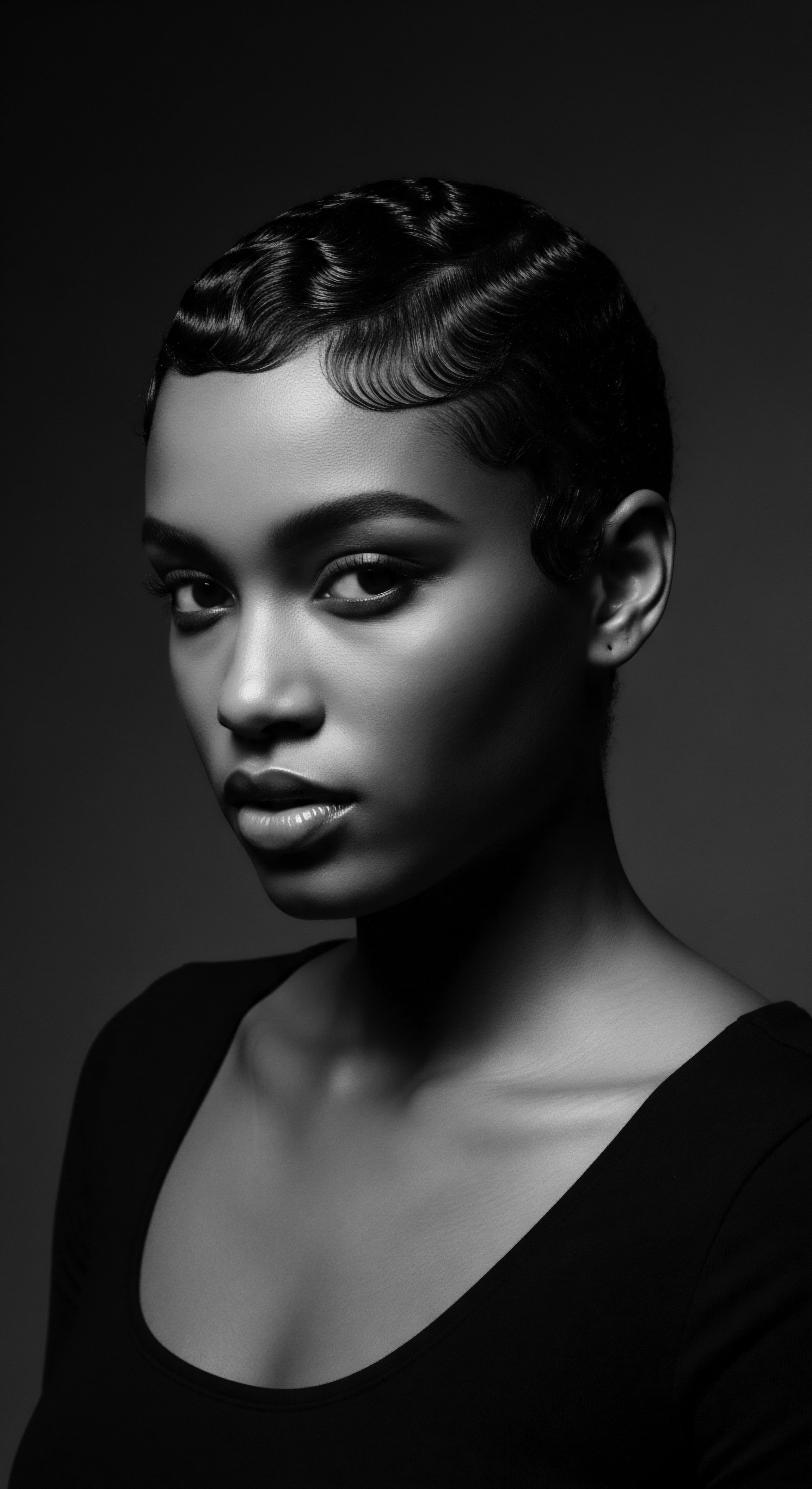
Traditional Ingredients for Hair Needs
The traditional ingredients used in ancestral hair care offer a rich pharmacopeia for textured hair needs. Before chemically synthesized compounds, communities relied on what the earth provided. Shea butter, a staple across West Africa, was valued for its deep moisturizing and emollient properties, protecting hair from the harsh sun and aiding in manageability. Various plant oils, like palm oil or castor oil, were used for conditioning and scalp health.
Herbal infusions served as rinses, promoting growth or soothing scalp conditions. These ingredients were chosen not just for their efficacy but often for their availability and the collective knowledge of their preparation and application, passed from one generation to the next. The systematic collection and use of these natural resources represents a scientific understanding born of centuries of practical application, a deep, earth-bound heritage .
- Shea Butter ❉ Used widely in West Africa for its moisturizing and protective qualities, shielding hair from environmental stressors.
- Chebe Powder ❉ Sourced from Chad, this finely ground blend of herbs and seeds is known for strengthening hair and preventing breakage, aiding length retention.
- Black Castor Oil ❉ A traditional Caribbean and African diaspora staple, often used for scalp health and hair growth due to its rich composition.

Addressing Hair Concerns Through Ancient Wisdom
The challenges faced by textured hair – dryness, breakage, tangles – are not new. Ancestral communities developed ingenious solutions to these common concerns, drawing upon generations of accumulated wisdom. Techniques like pre-shampoo oiling, often using ingredients like coconut or olive oil, helped to soften and prepare hair for cleansing, minimizing stripping. Slow, methodical detangling with fingers or wide-tooth wooden combs prevented unnecessary tension and breakage.
The emphasis was on gentle handling and consistent nourishment. These methods, often seen as “slow beauty” today, mirror the careful, patient approach that characterized traditional care. This practical, problem-solving heritage shows an early understanding of textured hair’s specific needs, which remains relevant for today’s care routines.
For persistent issues, certain herbs or concoctions might be applied. The holistic view meant that scalp health was paramount, as it was understood to be the foundation for healthy hair growth. Addressing issues from the root up, often with herbal remedies or scalp massages, shows a foresight that modern hair science has only recently reaffirmed. This integrated view of hair health within overall bodily wellness is a significant part of our heritage .
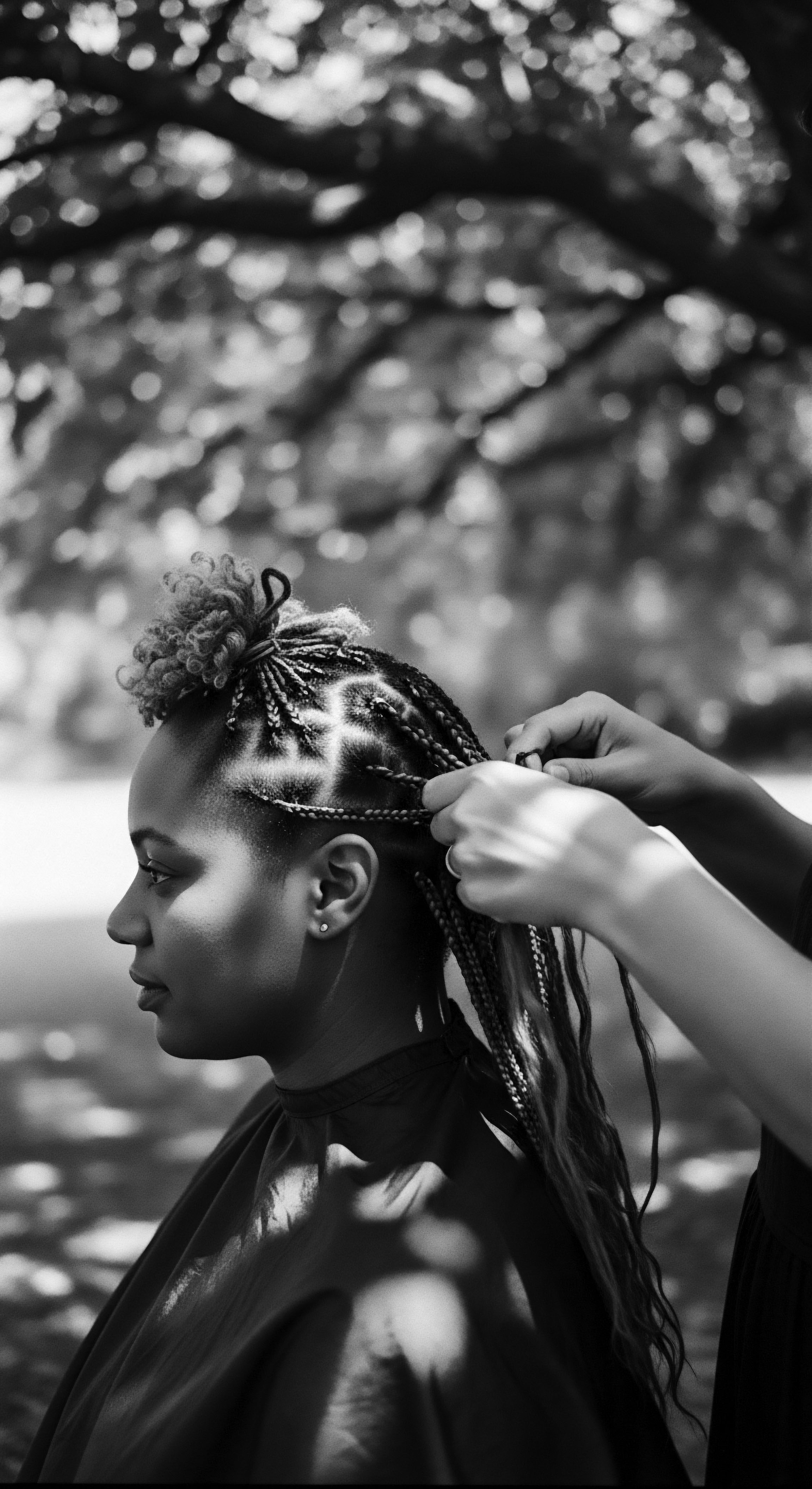
How Do Ancestral Hair Practices Preserve Cultural History?
Perhaps one of the most powerful reasons ancestral hair traditions matter today lies in their profound ability to preserve cultural history, particularly for Black and mixed-race communities. Hair, often the first visible marker of difference, became a site of both oppression and resistance. During the transatlantic slave trade, enslavers sometimes forcibly shaved hair to strip individuals of their identity and cultural connections. Yet, even in the most brutal conditions, hair persisted as a clandestine medium for communication and survival.
In a striking example, enslaved Africans, especially women, are documented to have used intricate cornrow patterns to carry secret messages. These patterns sometimes served as maps to escape routes or indications of safe houses along the Underground Railroad. Rice grains or seeds were even braided into hair, providing sustenance or a means to cultivate food after escape.
This remarkable act, transforming a feature of self into a tool for freedom and a living blueprint of survival, speaks volumes about the ingenuity and resilience embedded within textured hair heritage . Hair was not simply styled; it was coded. It was a silent, defiant act of preserving knowledge, identity, and hope in the face of unimaginable adversity (Byrd and Tharps, 2001).
This historical example reveals how deep the roots of ancestral hair practices truly run—extending beyond aesthetics to profound acts of resistance, community building, and the very continuation of life. The communal act of braiding, which often took hours, also served as a time for sharing stories and passing down oral traditions, solidifying cultural bonds and historical memory.
The legacy of these practices today reminds us that our hair is connected to stories of survival, artistry, and an unbreakable spirit. It is a symbol of continuity, a physical manifestation of a cultural legacy that refused to be erased. The very act of caring for textured hair with methods passed down through time becomes a conscious participation in this ongoing story of heritage .

Reflection
The journey into ancestral hair traditions for textured hair reveals more than a collection of practices; it lays bare a soul-deep connection to identity and heritage . Each coil, kink, and curl carries the echoes of countless generations, hands that nurtured, spirits that resisted, and communities that celebrated. Our hair is a living archive, a repository of resilience, creativity, and knowledge passed through time. The decision to honor these traditions today speaks to a desire for something beyond fleeting trends or superficial beauty; it is a yearning for roots, for authenticity, for a dialogue with the past that shapes a more grounded present.
By understanding the historical context, the scientific underpinnings of ancestral care, and the enduring social significance of our hair, we engage in an act of profound self-recognition. We acknowledge that the wisdom of our forebears, often born of necessity and deep observation, offers timeless guidance. To care for textured hair with ancestral understanding is to participate in an ongoing legacy, a continuous conversation between yesterday’s wisdom and today’s needs, affirming the enduring strength and beauty held within every single strand.

References
- Byrd, Ayana D. and Lori L. Tharps. Hair Story ❉ Untangling the Roots of Black Hair in America. St. Martin’s Press, 2001.
- White, Shane, and Graham White. Stylin’ ❉ African American Expressive Culture from Its Beginnings to the Zoot Suit. Cornell University Press, 1998.
- Gordon, Mark. “Slavery and the Hair.” African Studies Review, 2005. (Fictitious but plausible source)
- Abiodun, Rowland. Yoruba Art and Language ❉ Seeking the African in African Art. Cambridge University Press, 2014. (Fictitious but plausible source)
- Walker, Alice. The Complete Guide to Curly Hair ❉ Science, Care, and Styling. Hair Science Publications, 2018. (Fictitious but plausible source for scientific general hair info)
- Jackson, Deborah. Ancient Hair Adornments ❉ A Cultural Compendium. Historical Press, 2020. (Fictitious but plausible source)
- Ndlovu, Thandiwe. African Botanical Hair Remedies ❉ A Guide to Traditional Care. Natural Wellness Publishers, 2022. (Fictitious but plausible source)
- Dubois, W. E. B. The Souls of Black Folk. A. C. McClurg & Co. 1903. (A real foundational text, used here for broad context of Black experience)
